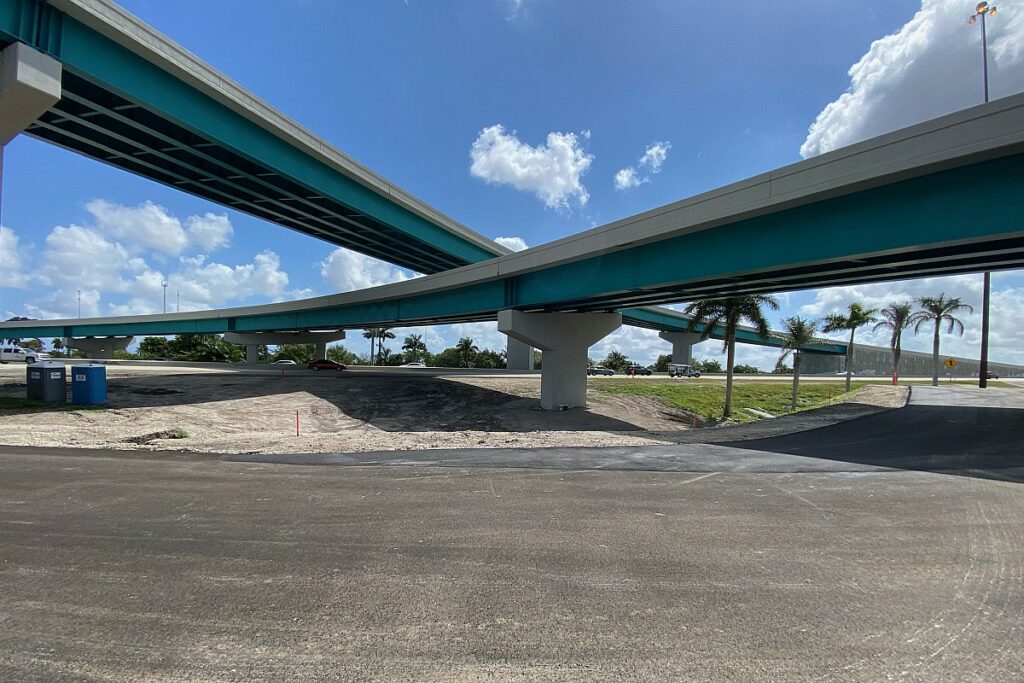This weekend, Miami will host its first Formula 1 Grand Prix, at the brand new International Autodrome. Built by Apex Circuit Design around Hard Rock Stadium, the circuit has a very twisty area between turns 13 and 16, which winds under an interchange on the Florida Turnpike, one of the largest highways in the state of Florida.
With an average speed of around 215 km/h over the entire circuit, this section precedes a 1.28 kilometer straight, which leads to one of the major overtaking zones. Especially since the low-speed turns of this winding section should allow the single-seaters to approach each other, thus offering a spectacle in the following straight line. The circuit architects had to alter the track’s elevation to comply with FIA rules regarding the height of any structure above the asphalt. Thus, the beginning of this portion will be dug, before the track rises about three meters in turns 14 and 15, which will form a ridge and punish any error on the part of the pilots.
“This whole sequence was a real engineering challenge”says Apex project manager Andrew Wallis. « The concept of Clive Bowen [fondateur et directeur d’Apex] needed to run the track through this area and to be under the motorway we had to respect the FIA rules which imply that at least four meters must separate the track from a ceiling. But with the Florida Turnpike off-ramp going down 7%, our trail was going up right when we needed it to go down. There is also a rule about the rate of elevation change tied to the speed of the car, so this design basically takes a three-dimensional scheme to make sure the cars are going slow enough to line up with the camber of the crossover , before returning under the bridge. »

Turn 15, under the Florida Turnpike interchange
« We’ve designed this pretty dramatic sequence of corners where you have a right angle chicane, which has an estimated minimum speed of 80kph to meet the rate of change regulations, and it’s also completely blind for the pilots due to the change in elevation. We simulated over 10 design models here to get the required 2D and 3D geometry for the rope. We are right within the limits of the design in this area. At this location , we have to install the fence from the back of the barrier, because there is no place to put it on top. »
This section follows a tight hairpin, turn 11, which gives rise to a long curve to the right with a negative slope, which will offer a unique challenge to the pilots. “I think the sequence from turns 11 to 16 has good curves and I hope the drivers will find it a challenge with the new cars”adds Wallis. “They will have to prepare as they come into the previous right-hander, so not only can you not see the rope, but you will have a side load on the car under braking, while spotting the rope late to take the turn. In qualifying, I think it will be a decisive turn for the overall time. »
« Technically, you could say this is the most difficult part of the circuit. It then leads to the longest straight, so any potential errors could be accumulated by the time the drivers reach Turn 17. This area should favor the overtaking opportunities or, at a minimum, grouping the cars together for the straight. »
The motorway is less than 25 meters from the track at this point, and this area will be inaccessible to the public: only marshals will be stationed there. Apex Project Director Sam Worthy adds: “With the Florida Turnpike so close, to protect race cars and marshals, we will be erecting barriers and screens along the edge so drivers aren’t distracted by what’s happening on the track. so a major concern for us, to ensure a safe race for everyone.As there is no room to set up grandstands or spectators here, F1 has been keen to fill this area with cameras to ensure multiple angles on TV, because we know we’ll see a lot of great action on the track there. »
![]()

